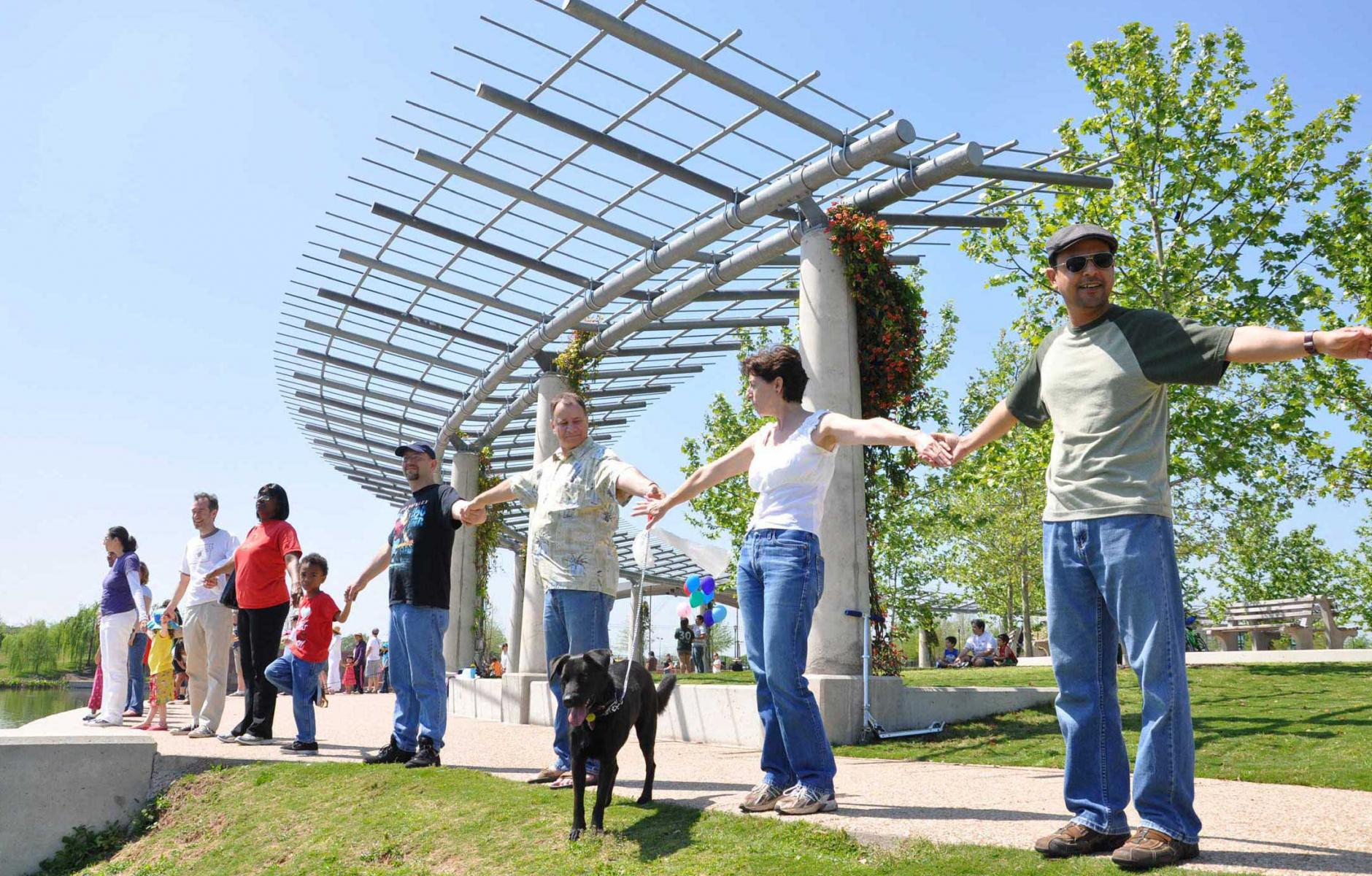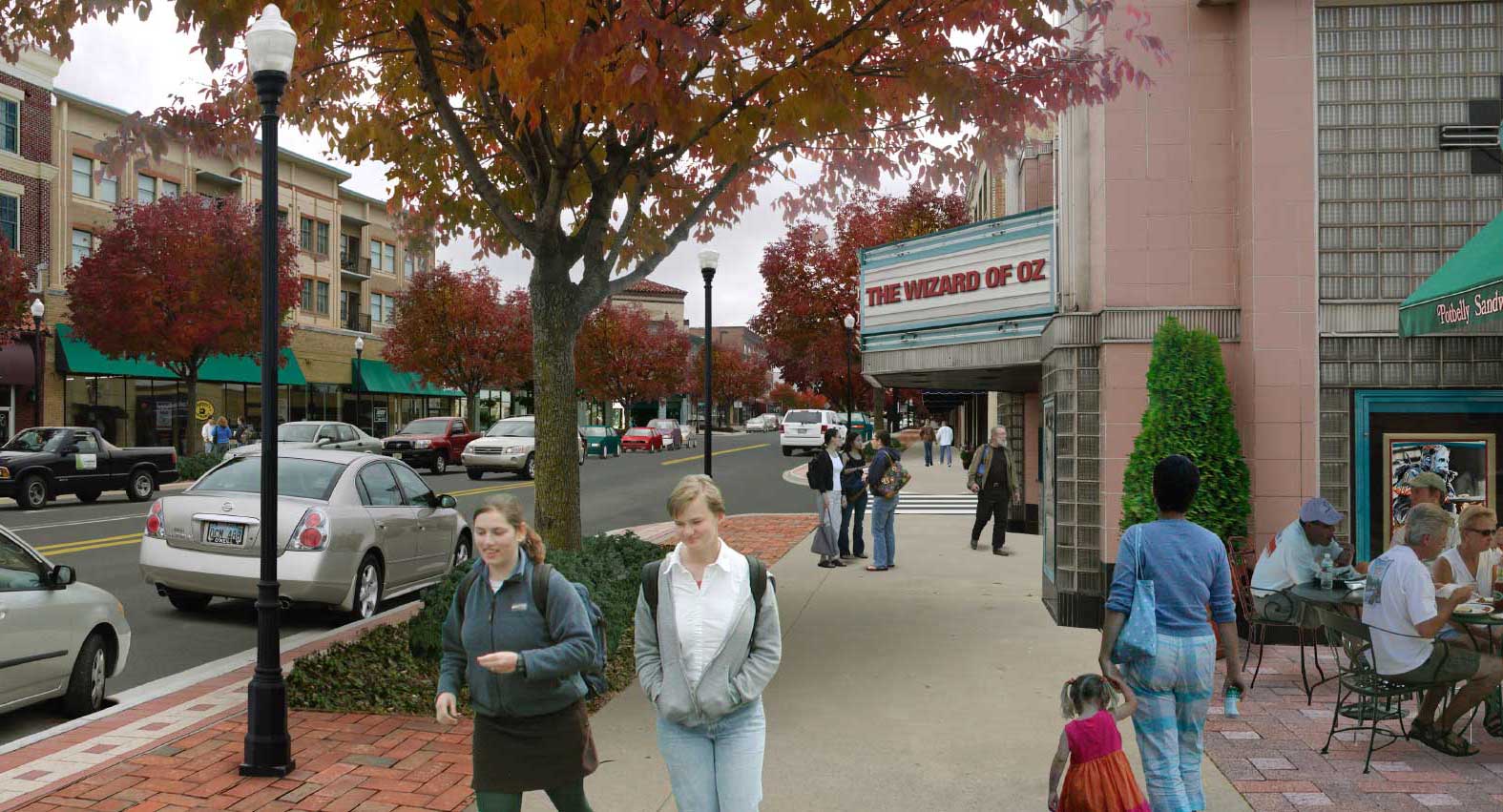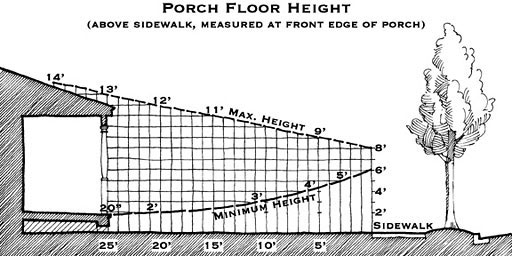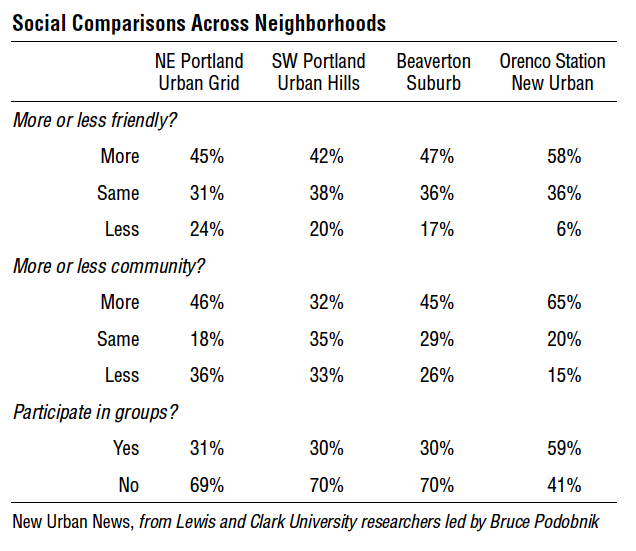
Fighting loneliness through community design
America is suffering from an epidemic of loneliness, according to Surgeon General Vivek Murthy. One in two adults report experiencing loneliness, he explains, and the numbers are highest among young adults (79 percent of those aged 18-24 report feeling lonely).
Loneliness has profound implications for health and resilience in the face of disaster, including extreme weather. A landmark study in Chicago showed dramatic differences between two neighborhoods during a historic heat wave: The neighborhood with better social connections (but similar economics) experienced fewer deaths. More broadly, Loneliness exacerbates acute and chronic disease and mental health problems. The most significant predictor of health is social interaction—surpassing even physical activity, according to Joanna Lombard, a University of Miami professor who has studied healthy communities.
The connection between social interaction and health wasn’t always widely recognized. Murthy explains that he was unaware of it when he first became Surgeon General in 2014. While his 2023 report did not mention community design as a key factor, media analyses in recent months have highlighted the obvious—how we plan communities and public space tends to isolate or bring people together.
That idea is familiar to new urbanists, who have long advocated a “supportive physical framework” to strengthen “the personal and civic bonds essential to an authentic community.” The design of blocks and streets should “encourage walking and enable neighbors to know each other and protect their communities,” according to the Charter of the New Urbanism.
While the issue is not new, the urgency is growing. Covid contributed to the problem by accelerating technological changes that reduce direct human connection (e.g., self-checkout lines, virtual meetings). At the same time, the urban planning strategies for addressing the issue are becoming more apparent. Urbanists and planners may design for and promote social interaction in three broad ways:
- Incorporate small interventions in public spaces to encourage people to interact.
- Employ overall block, street, and neighborhood design that promotes neighborliness.
- Promote formal and informal neighborhood-scale institutions that allow people to form and maintain overlapping connections.
Public space interventions
A recent Bloomberg report, City Life Is Too Lonely, Urban Planning Can Help, explains how the details of public space can overcome the barriers between people. The article, in response to Murthy’s statements, makes the case for landscape design and planning that consciously enables social interaction. Author Linda Poon quotes the managing principal of Happy Cities, a design firm.
“Giving people something to focus on or to fuel their curiosity, be it artwork or a dog, can help ease that pressure. Small details like seating arrangements also matter. Benches shouldn’t be placed directly across from one another, said [Housam] Elokda, or side-by-side, which discourages any interaction. Instead, he advises them to be arranged at an angle to one another, giving users the option to acknowledge or engage with one another. Framing a space with trees or buildings can also make people more comfortable by creating a sense of enclosure or refuge.
“These interventions all add up to what Elokda calls the visual complexity of a space. ‘As you’re walking alongside a blank wall, people don't feel like they want to walk there,’ he said. ‘The same applies to parks — it’s about what people can see within them and whether there are places to sit and activities to do. It’s a bit of a fine balance.’ ”
In other words, the specifics of public space can make a friendly or hostile built environment.

Block, street, and neighborhood design
It’s not just the inclusion of parks and gathering spaces and how they are configured: As Steve Price writes in Public Square, New Urbanism and form-based coding focus on how design affects humans as social animals. The design characteristics of neighborhoods interact holistically to bring people together.
“Concerns about how wide sidewalks are, how close buildings are to sidewalks, whether the frequency and transparency of windows imply that buildings are inhabited, how inviting ground floor frontages are, whether street lighting serves pedestrians, whether business signage can be read from the sidewalk, and how well people can see and read the faces of others, are all powerful features of good form-based coding,” he says.
A remarkable and growing body of literature tells us that healthy communities need face-to-face interaction among their members, something electronic media cannot replace. Neighborhood design enables or prevents that interaction.
In the wake of the Murthy report, the media has picked up on that idea, focusing less on holistic design and more on specific details of neighborhoods. For example, sidewalks are not just about pedestrian safety; they also provide social benefits, argues Governing Magazine. USA Today recently published an article on how front porches bring people together titled “Feeling sad, lonely? Making friends as an adult is hard. Your front porch can help.”

Regarding porches, Steve Mouzon’s explanation of the relationship between porch height and distance from the sidewalk is worth remembering as valuable new urban research. Mouzon drew a diagram in 2009 offering guidance on porch design that enables comfort and social interaction.
Urbanists could create a similar diagram of the social implications of street design. I experienced the impact of street width in my last two houses, where my family resided in each dwelling for a dozen years in the same walkable neighborhood. The first house fronted a street 34 feet from curb-to-curb: that was too wide to talk to a neighbor across the street. The second house was on a 26-foot-wide street, narrow enough to enable cross-street conversations (in addition to slowing traffic, which made the street quieter and more pleasant for street life).
Neighborhood-scale institutions
Parks, porches, sidewalks, and street design help. But neighborhood social life is not all about urban design. Healthy communities need formal and informal institutions that promote social interaction for humans to thrive, argues author Seth Kaplan in Fragile Neighborhoods.
Murthy talks a lot about institutions and their impact on alleviating loneliness, but what is missing from the conversation is in the title of Kaplan’s book— neighborhoods, which are in the wheelhouse of urban planners. Americans used to live within “place-based networks” of clubs, churches, schools, commerce, and recreation that overlapped, wrapping individuals in social support, Kaplan explains. The local networks existed at the neighborhood or semi-neighborhood scale, protecting individuals from isolation and loneliness.
Those networks have largely disappeared, replaced by those outside the local community. We shop and interact online, extended families are scattered, government is often distant, and we commute long distances or work remotely. Kaplan says these arrangements serve some people well, but many more people fall through the cracks—especially the young, the old, the disadvantaged, and those going through crises.
Kaplan believes that physical neighborhoods could be a solution to this profound problem. “A flourishing society needs to be built on flourishing neighborhoods.”
Formal and informal institutions foster social life. Formal institutions include schools, churches, and civic associations. Informal institutions include the relative tendency to welcome and look out for neighbors. “Eyes on the street,” a concept promoted by urbanist Jane Jacobs, is an informal institution not merely about physical design, Kaplan notes: We have lost the norm of keeping an eye on the neighbors and children. Furthermore, local businesses are neighborhood institutions, whereas chain stores usually are not.
CNU cofounder Andres Duany argues that new urbanists should study The Villages, one of the nation’s largest retirement developments, located in Central Florida. While not a new urbanist design, The Villages are highly active socially, and one reason is the developer has seeded and subsidized thousands of resident-led social clubs. The developer provides a meeting space, mailing list, and financial support for residents launching clubs on passions, hobbies, interests, and common themes (like rowing, a musical genre, or people from Ohio), Duany explains.

Early on in the New Urbanism, researchers examined the question of whether walkable neighborhoods in new urban communities fostered social interaction. Bruce Podobnik, a researcher at Lewis and Clark University, conducted a series of studies at Orenco Station, a transit-oriented development in Hillsboro, Oregon. “The Orenco Station study is probably the first to show, in an academic study, such a big difference in social activity between a new urban community and a comparable suburban development. Also, it is the first to show such high rates of walking to stores,” according to New Urban News in September of 2009 (see table above).
Over the last 15 years, we have seen less interest in the social benefits of walkable communities, as that topic was overshadowed by issues related to transportation, the economy, the environment, equity, and other concerns. A serious look at social connections should be revived—for their own sake and because they impact other issues. A strong community is more resilient to climate change, for example.
Hampstead in Montgomery, Alabama, a 416-acre new town established in 2008, offers a model for community design and social software that promotes interaction and well-being. The development team, co-founded by Anna Lowder and Harvi Sahota, explains the approach: “Civic space is vital. More than just landscaping, thoughtful civic space ranges from the agrarian urbanism component at the farm to sites for physical activity, fire pit parks for gathering, lakeside greens, and large open sites for annual traditions like food and drink festivals, fundraisers, and neighborhood parties.”
In light of America’s loneliness epidemic, urbanists should examine how formal and informal institutions, like clubs, can be joined with human-scale neighborhood and public space design to, again, wrap individuals in social networks of support.




